

|
|
Cat and Mouse AKA Mousey
R2 - United Kingdom - Network Review written by and copyright: Paul Lewis (4th July 2014). |
|
The Film
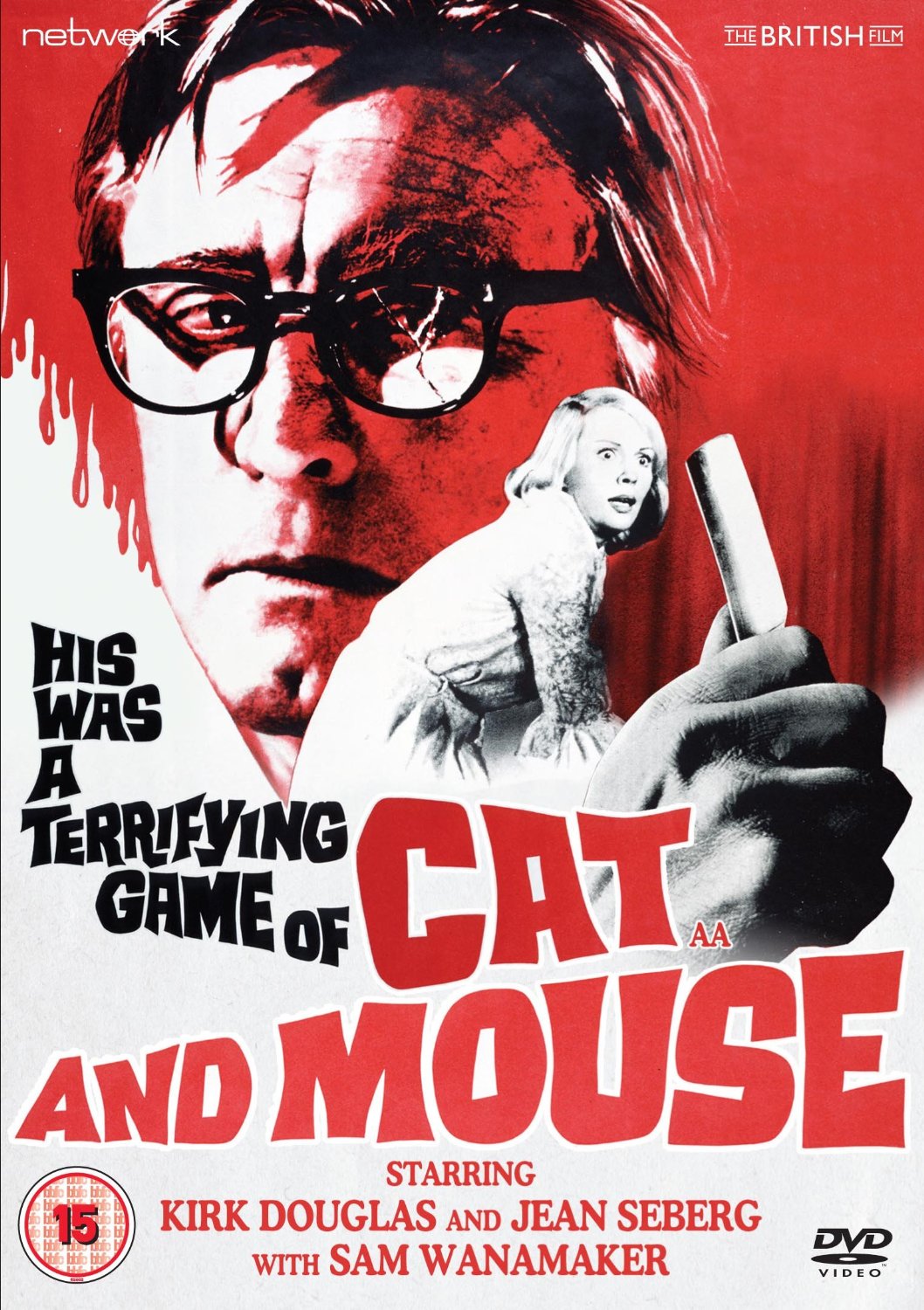 Cat and Mouse AKA Mousey (Daniel Petrie, 1974) 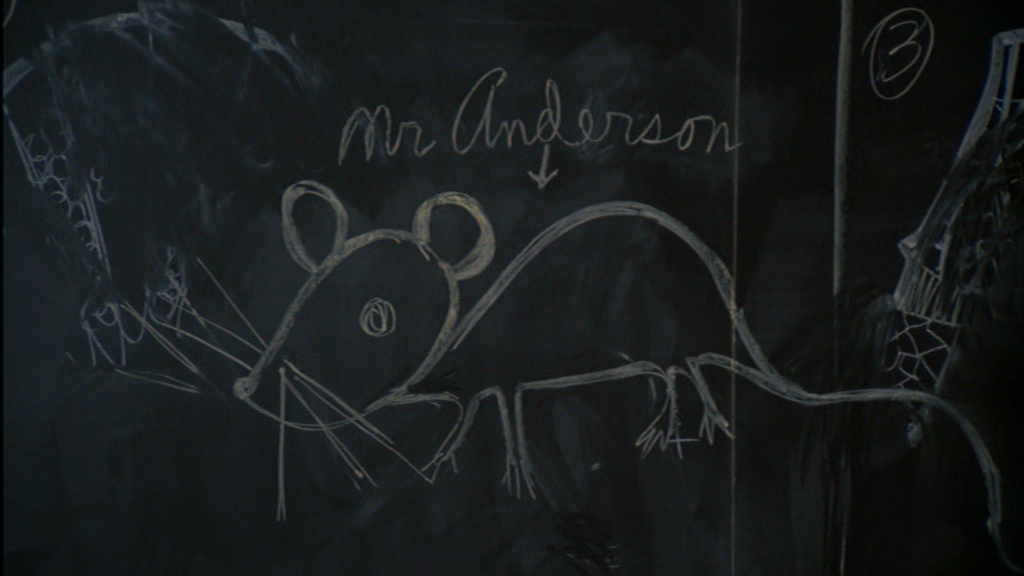 In this dark thriller, Kirk Douglas plays George Anderson, a meek schoolteacher whose students have given him the nickname ‘Mousey’. When the film opens, Anderson’s wife Laura (Jean Seberg) has left him, taking with her her young son Simon (Stuart Chandler), who Anderson has raised as his own child. Laura has moved to Montreal to marry her new beau David Richardson (John Vernon). Anderson sells his house and leaves his job, traveling to Montreal with the hopes of being reunited with Laura and, especially, Simon. When Laura rejects him, he threatens to commit an act of violence as ‘just a warning’. He arranges the brutal murder of a young woman, Sandra, and then kills the private detective that David has hired to follow Anderson. The film builds to its climax as Anderson works his way closer to Laura and Simon. In this dark thriller, Kirk Douglas plays George Anderson, a meek schoolteacher whose students have given him the nickname ‘Mousey’. When the film opens, Anderson’s wife Laura (Jean Seberg) has left him, taking with her her young son Simon (Stuart Chandler), who Anderson has raised as his own child. Laura has moved to Montreal to marry her new beau David Richardson (John Vernon). Anderson sells his house and leaves his job, traveling to Montreal with the hopes of being reunited with Laura and, especially, Simon. When Laura rejects him, he threatens to commit an act of violence as ‘just a warning’. He arranges the brutal murder of a young woman, Sandra, and then kills the private detective that David has hired to follow Anderson. The film builds to its climax as Anderson works his way closer to Laura and Simon.
The film was made for US television and was screened on the 9th of March, 1974, as part of the ABC Saturday Suspense Movie strand, alongside Killdozer! (Jerry London, 1974) and two of the Six Million Dollar Man films. Outside the US, the film was screened at cinemas in some countries, including the UK, where it was retitled Cat and Mouse and placed on a double-bill with Freddie Francis’ Craze (1974). 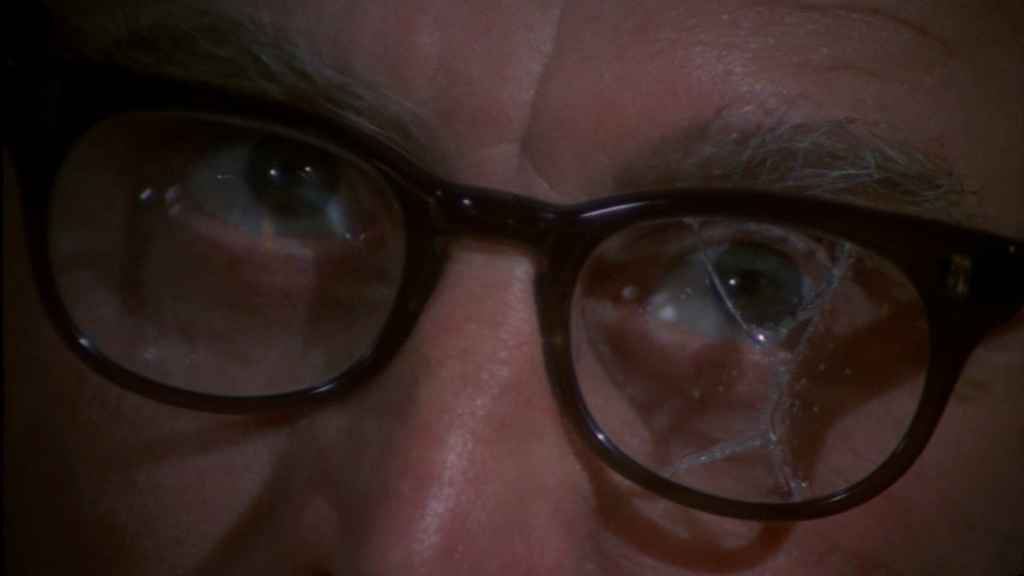 The film details a cat and mouse struggle between Anderson and Laura, although at times it’s unclear as to which character is the cat and which is the mouse. Anderson is desperate to prove that the nickname awarded to him by his students is inaccurate, though throughout the film he repeatedly shows himself to be the ‘mousey’ of the film’s title. He’s an intellectual man who is driven by desperation into ‘proving’ his manhood: in the second half of the film, the camera repeatedly frames, in close up, Douglas’ face, the left lens of his spectacles cracked – symbolic of the fractured masculinity of this educated man. The sight of broken spectacles suggests a vulnerable intelligence and the conflict between the mind and the physical world – between ideas and reality. It’s an image that recalls the iconic poster for Peckinpah’s then-recent Straw Dogs (1972), in which the right lens of the spectacles of Dustin Hoffman’s character (a mathematician who like Anderson is provoked into ‘proving’ his masculinity) is broken, the glass spilling across his face. Similar iconography appears in Joel Schumacher’s Falling Down (1993): D-Fens (Kirk Douglas’s son Michael), another character whose masculinity has been undermined by his recent divorce and his ex-wife’s attempts to keep him away from his child, is shown throughout the film wearing a pair of browline spectacles, the right lens of which is shattered. The film details a cat and mouse struggle between Anderson and Laura, although at times it’s unclear as to which character is the cat and which is the mouse. Anderson is desperate to prove that the nickname awarded to him by his students is inaccurate, though throughout the film he repeatedly shows himself to be the ‘mousey’ of the film’s title. He’s an intellectual man who is driven by desperation into ‘proving’ his manhood: in the second half of the film, the camera repeatedly frames, in close up, Douglas’ face, the left lens of his spectacles cracked – symbolic of the fractured masculinity of this educated man. The sight of broken spectacles suggests a vulnerable intelligence and the conflict between the mind and the physical world – between ideas and reality. It’s an image that recalls the iconic poster for Peckinpah’s then-recent Straw Dogs (1972), in which the right lens of the spectacles of Dustin Hoffman’s character (a mathematician who like Anderson is provoked into ‘proving’ his masculinity) is broken, the glass spilling across his face. Similar iconography appears in Joel Schumacher’s Falling Down (1993): D-Fens (Kirk Douglas’s son Michael), another character whose masculinity has been undermined by his recent divorce and his ex-wife’s attempts to keep him away from his child, is shown throughout the film wearing a pair of browline spectacles, the right lens of which is shattered.
The early sequences of Mousey deftly delineate Anderson’s beleaguered masculinity. As the film opens, we see Anderson showing a couple around his house, which he is selling. ‘Will the lady be collecting her things?’, one of the prospective buyers asks Anderson. ‘No’, is his curt reply. ‘And the, er, kids’ stuff?’, the other buyer asks. Anderson’s response is the same: a flat ‘No’. There are photographs of Anderson with a woman (Laura) and child (Simon). Anderson is only taking one of these photographs ‘and the suit I was married in’. He is leaving the rest of his possessions behind. Next, we see him breaking into the school in which he has worked for fifteen years. In his classroom, on the chalkboard, is a drawing of a mouse and, next to it, the words ‘Mr Anderson’. He is clearly perceived as timid by his students, and we soon learn of their nickname for him (‘Mousey’). He is patronised by the principal, who has hired another teacher, Miss Carter, to ‘ease the burden’ on Anderson. Finally, Anderson snaps, telling his colleagues, ‘I’m sick, sick to death of all of you [….] “Mousey”. Say it to my face’. His anger piqued, he spits out his feelings about his job and his determination to assert his masculinity: ‘Fifteen years. I only stuck it out because I had to support my wife and son. Yes, my son who is not my son. Maybe the kids were right in calling me “Mousey”, but not any more because I’m not a mouse, you hear?’ Anderson’s relationship with Laura was built on convenience: ‘He wanted a child and couldn’t have one; I wanted a father for Simon’, Laura tells David, later informing him that she believes Anderson has ‘really convinced [himself] that Simon is his son. He made himself believe our lie’. David and Laura have acquired a court order preventing Anderson from seeing Simon, and Anderson claims that he simply wants Simon to carry Anderson’s name. It’s clear that Anderson cares deeply for Simon, and given his meek nature at the start of the film it’s unclear as to why Laura has acquired the court order preventing Anderson from seeing the boy – though Anderson’s latent violence, revealed as the film progresses, arguably offers a retrospective justification for this decision. However, alternatively, one could argue that had Laura allowed Anderson to continue to act as a father to Simon, Anderson would not have attempted to develop this violent aspect within himself: it seems clear that he lashes out owing to the frustration that he experiences because of Laura’s attempts to distance herself, and Simon, from him. 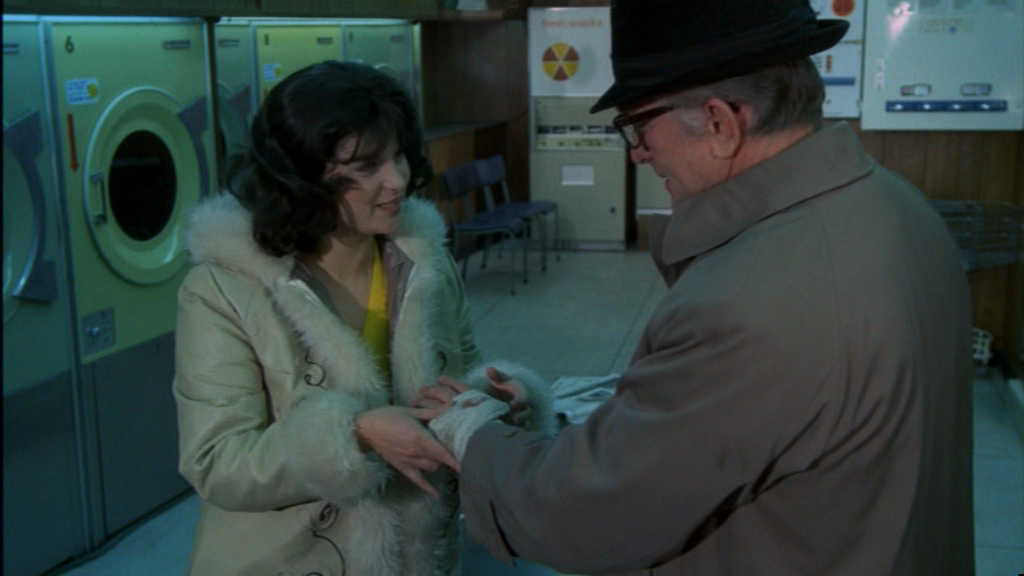 Anderson’s violence rapidly escalates. He begins by stalking Laura, turning up at her wedding to David in the suit he wore for his own marriage to Laura. He threatens to murder a stranger as a means of demonstrating the extremes of his emotions: ‘I don’t know who, and I don’t care because the killing tonight is just a warning’, he announces. What follows is a well-constructed sequence in which Anderson enters a late-night launderette and meets a young woman named Sandra (Beth Porter). In the same year as Mousey was released, Ted Bundy began his murder spree, and one of the techniques Bundy used to inspire trust in his victims was to wear his left arm in a sling or to wear a fake cast on one of his arms or legs. In Mousey, Anderson uses an eerily similar technique to get close to his first victim, Sandra: Anderson wears a bandage on his arm. Taken in by Anderson’s timid nature and the fake injury, Sandra invites him to her flat for a drink and to fix his bandage. As Sandra is working on his bandage, Anderson tells her, ‘I’m so glad I met you. I wanted to meet someone like you tonight. It was so easy’. After brutally murdering Sandra (by slashing her throat), Anderson has crossed the point of no return, and shortly after he stabs to death the private detective that David has hired to follow Anderson, before taking Simon and David’s mother hostage. The film builds towards a climax which has some striking similarities with Bob Clark’s Black Christmas, also released in 1974. Anderson’s violence rapidly escalates. He begins by stalking Laura, turning up at her wedding to David in the suit he wore for his own marriage to Laura. He threatens to murder a stranger as a means of demonstrating the extremes of his emotions: ‘I don’t know who, and I don’t care because the killing tonight is just a warning’, he announces. What follows is a well-constructed sequence in which Anderson enters a late-night launderette and meets a young woman named Sandra (Beth Porter). In the same year as Mousey was released, Ted Bundy began his murder spree, and one of the techniques Bundy used to inspire trust in his victims was to wear his left arm in a sling or to wear a fake cast on one of his arms or legs. In Mousey, Anderson uses an eerily similar technique to get close to his first victim, Sandra: Anderson wears a bandage on his arm. Taken in by Anderson’s timid nature and the fake injury, Sandra invites him to her flat for a drink and to fix his bandage. As Sandra is working on his bandage, Anderson tells her, ‘I’m so glad I met you. I wanted to meet someone like you tonight. It was so easy’. After brutally murdering Sandra (by slashing her throat), Anderson has crossed the point of no return, and shortly after he stabs to death the private detective that David has hired to follow Anderson, before taking Simon and David’s mother hostage. The film builds towards a climax which has some striking similarities with Bob Clark’s Black Christmas, also released in 1974.
Mousey was directed by the Canadian filmmaker Daniel Petrie and was shot on location in Montreal and at Pinewood studios. Production began on November, 1973, and lasted for nine weeks. Petrie noted that he ‘had concerns about [working with] Kirk [Douglas], because he had a reputation of eating directors alive for breakfast’ (Petrie, quoted in Coates-Smith & McGee, 2012: 186). However, these concerns were dispelled during the shoot, and Petrie noted that Douglas was open to making suggestions about his character’s behaviour and dialogue: ‘Kirk was searching to make the film better’ (Petrie, quoted in ibid.). For Douglas, the character offered a chance to escape his usual ‘type’: ‘I’d call this a fun picture’, Douglas commented, ‘I know the guy I play bumps off a couple of people. But he’s so interesting. He’s weak, and weakness is more interesting than strength’ (Douglas, quoted in Coates-Smith & McGee, 2012: 186). The film is uncut and runs for 85:40 mins (PAL).
Video
Mousey was shot for American television and released in cinemas in various countries outside the US. The main presentation on this disc is in the 1.78:1 ratio, with anamorphic enhancement. (There’s a secondary fullframe presentation, accessible via the ‘extras’ menu.) Whilst the film was shot for television, the compositions of the widescreen presentation here work perfectly, suggesting that the photography (by noted cinematographer Jack Hildyard) was produced with two aspect ratios in mind: the fullframe presentation of the television broadcast, and a wider screen ratio, as represented here, for cinema release. The presentation is very good. There is some minor damage here and there, but the image is detailed and has good contrast. It’s a very pleasing presentation of the film.
Audio
Audio is presented via a two-channel mono track. This is clear throughout. (It’s worth noting that the film includes an interesting score from Ron Grainer.)
Extras
A trailer (2:41) is included, as is an image gallery (1:19). An alternative fullframe presentation of the film is included. This runs for 89:41: the film itself runs for 85:40, the same as the main presentation, but this title on the disc also includes an alternate fullframe presentation of the trailer and roughly a minute’s worth of black screen. The fullframe presentation is on the left; the widescreen presentation is on the right. 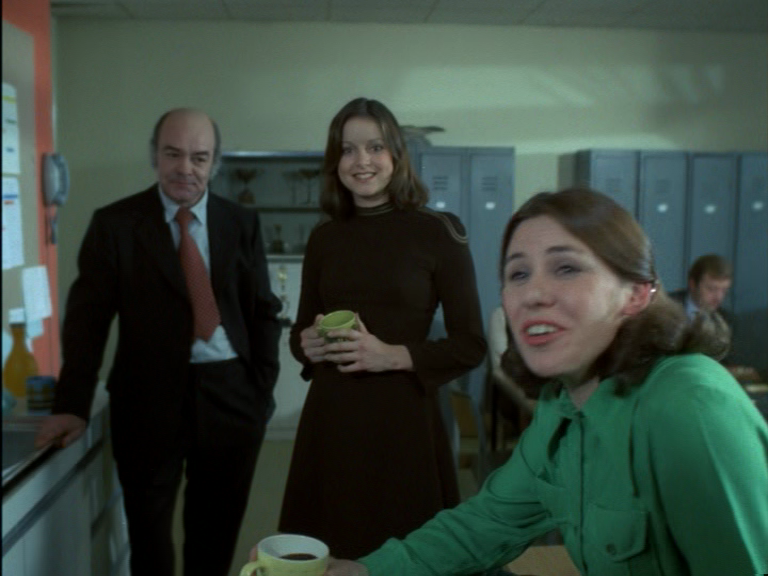 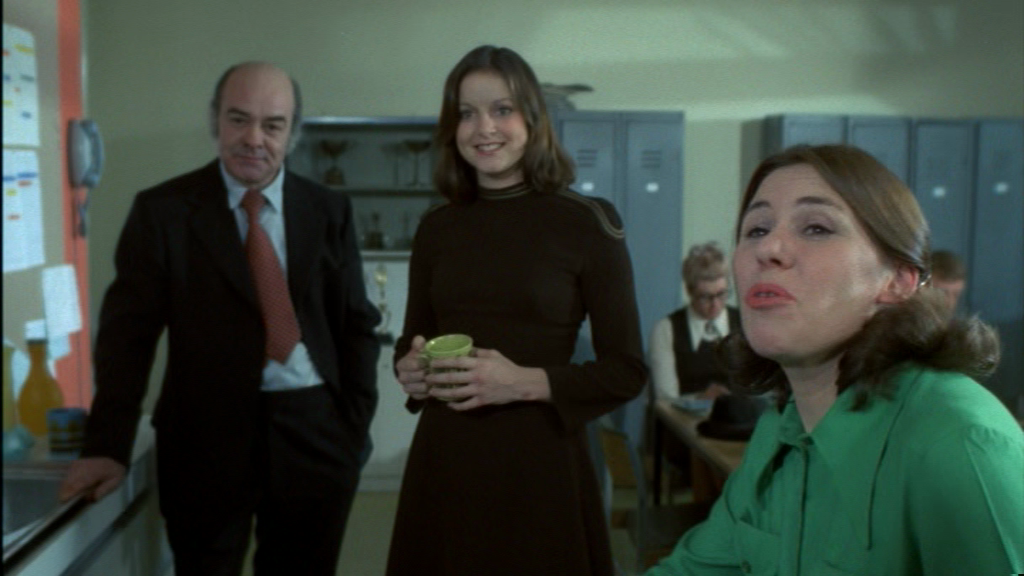
The original pressbook is included too, as a .PDF file.
Overall
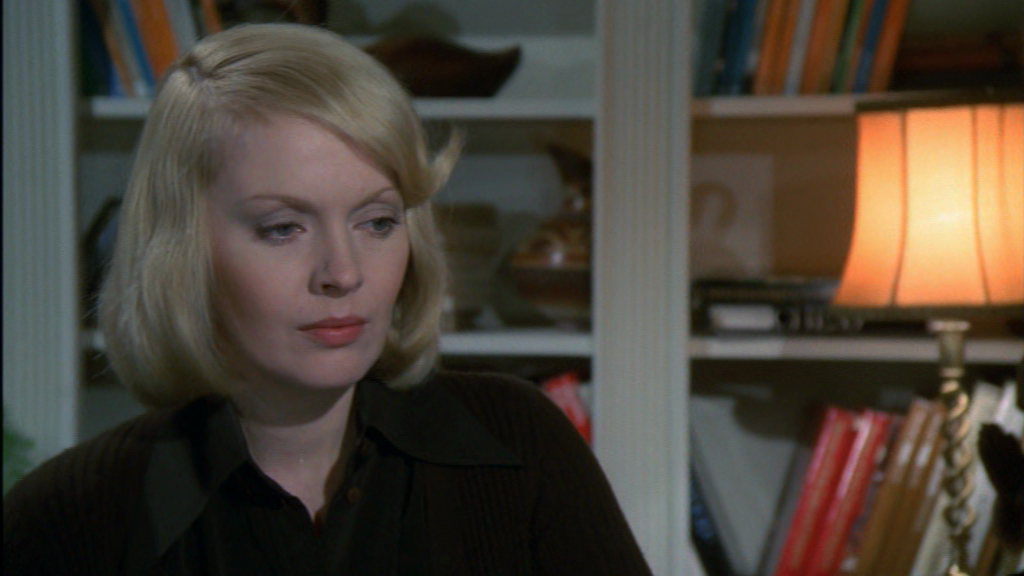 In many ways, this film feels like a response to Peckinpah’s Straw Dogs – a teacher who is perceived as meek is forced to prove his mettle and demonstrates a capacity for violence that arguably is within us all. Like David Sumner’s (Dustin Hoffman) violence, and his transformation from meek mathematics professor to ruthless defender of his home, in the second half of Straw Dogs, Anderson’s latent brutality threatens to alienate the viewer. The murder of Sandra is a turning point: it’s a deftly-handled sequence, with its eerie echoes of Ted Bundy’s methodology, but its narrative function is questionable, and it ultimately marks the point at which Anderson becomes an unsympathetic character (and a potential threat to Laura and David). Ultimately, as Coates-Smith and McGee note, the film is ‘a portrait of a man unhinged by the loss of everything meaningful in his life’ who is ‘transformed into a crazed and violent stalker’ (Coates-Smith & McGee, op cit.: 187). In its exploration of Anderson’s extreme response to the frustrations of his life, the film, like Straw Dogs or Falling Down (which starred Douglas’ son), suggests that a latent propensity for violence exists within the most meek men, and possibly within all of us. In many ways, this film feels like a response to Peckinpah’s Straw Dogs – a teacher who is perceived as meek is forced to prove his mettle and demonstrates a capacity for violence that arguably is within us all. Like David Sumner’s (Dustin Hoffman) violence, and his transformation from meek mathematics professor to ruthless defender of his home, in the second half of Straw Dogs, Anderson’s latent brutality threatens to alienate the viewer. The murder of Sandra is a turning point: it’s a deftly-handled sequence, with its eerie echoes of Ted Bundy’s methodology, but its narrative function is questionable, and it ultimately marks the point at which Anderson becomes an unsympathetic character (and a potential threat to Laura and David). Ultimately, as Coates-Smith and McGee note, the film is ‘a portrait of a man unhinged by the loss of everything meaningful in his life’ who is ‘transformed into a crazed and violent stalker’ (Coates-Smith & McGee, op cit.: 187). In its exploration of Anderson’s extreme response to the frustrations of his life, the film, like Straw Dogs or Falling Down (which starred Douglas’ son), suggests that a latent propensity for violence exists within the most meek men, and possibly within all of us.
References: Coates-Smith, Michael & McGee, Garry, 2012: The Films of Jean Seberg. London: McFarland This review has been kindly sponsored by:  >
|
|||||

|